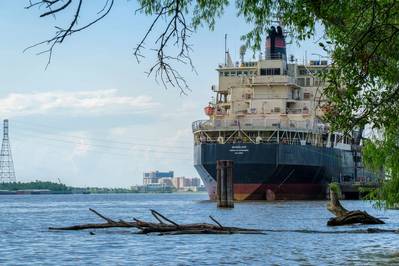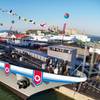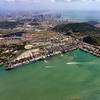U.S. National Maritime Strategy in the Spotlight @ MRS '24
The Maritime Risk Symposium will convene in Monteray, CA next month, a small conference with a high-profile speaker line-up from across government, industry and academia. Here we look at Panel 3 – Maritime Policy vis a vis a new National Maritime Strategy, facilitated by
CAPT Jon Kaskin, US Navy Reserve (retired)
This panel will inform participants and generate discussion regarding the forthcoming National Maritime Strategy (NMS). Congress originally mandated that the NMS be developed in 2014 to determine what regulations and policies reduced the competitiveness of U.S.-flag shipping in international trade and to make recommendations that would increase competitiveness, increase the use of short sea shipping, and enhance U.S. shipbuilding capability. This was the first time since the Commission on Merchant Marine and Defense issued its final report in 1989 that a revised NMS was called for.
For various reasons, the Administrations since then have failed to issue a Strategy that meets Congressional requirements.
This article is premised on a panel discussion scheduled for the Maritime Risk Symposium 2024, scheduled for June 11-13 at Naval Postgraduate School, Monterey, CA, CLICK HERE for more information and to Register.
Consequently, Congress in the FY2023 National Defense Authorization Act called for a more comprehensive effort and to have this National Maritime Strategy informed by a study conducted by a Federally Funded Research and Development Corporation to identify key elements for a national maritime strategy that would encompass U.S.-flag shipping, mariner workforce and domestic shipbuilding infrastructure and workforce. The subsequent NMS is to be submitted by the Secretary of Transportation, in consultation with the Secretary of Homeland Security and the Commander of United States Transportation Command within 6 months after the study is completed later this year. The Strategy is to make recommendations to:
- (A) make United States-documented vessels more competitive in shipping routes between United States and foreign ports;
- (B) increase the use of United States-documented vessels to carry cargo imported to and exported from the United States;
- (C) ensure compliance by Federal agencies with chapter 553;
- (D) increase the use of short sea transportation routes, including routes designated under section 55601(b), to enhance intermodal freight movements;
- (E) enhance United States shipbuilding capability;
- (F) invest in, and identify gaps in, infrastructure needed to facilitate the movement of goods at ports and throughout the transportation system, including innovative physical and information technologies;
- (G) enhance workforce training and recruitment for the maritime workforce, including training on innovative physical and information technologies;
- (H) increase the resilience of ports and the marine transportation system;
- (I) increase the carriage of government-impelled cargo on United States-documented vessels pursuant to chapter 553 of title 46, section 2631 of title 10, or otherwise; and
- (J) maximize the cost effectiveness of Federal funding for carriage of non-defense government impelled cargo for the purposes of maintaining a United States flag fleet for national and economic security.
This panel will consist of the US Maritime Administration sponsor of the FFRDC study, the Center for Analyses FFRDC study director, and representatives from maritime shipping/labor and the shipbuilding industry. The first two panelists will provide the status of the NMS effort and its expectations of what it should accomplish. The last two panelists will provide perspectives and expectations from the U.S.-flag shipping, U.S. shipbuilding and labor. Symposium participants will be welcomed to provide input into the ongoing study.















